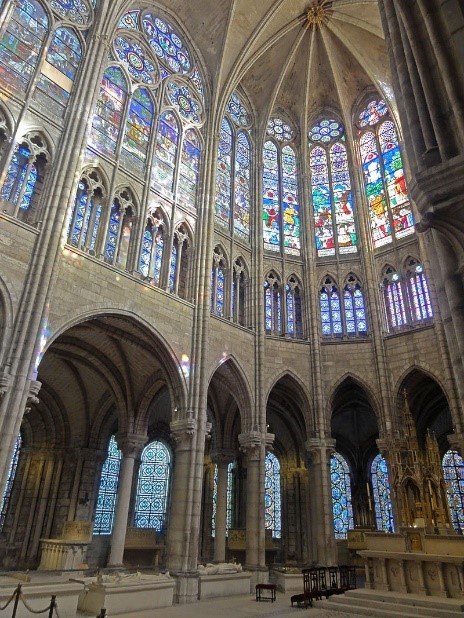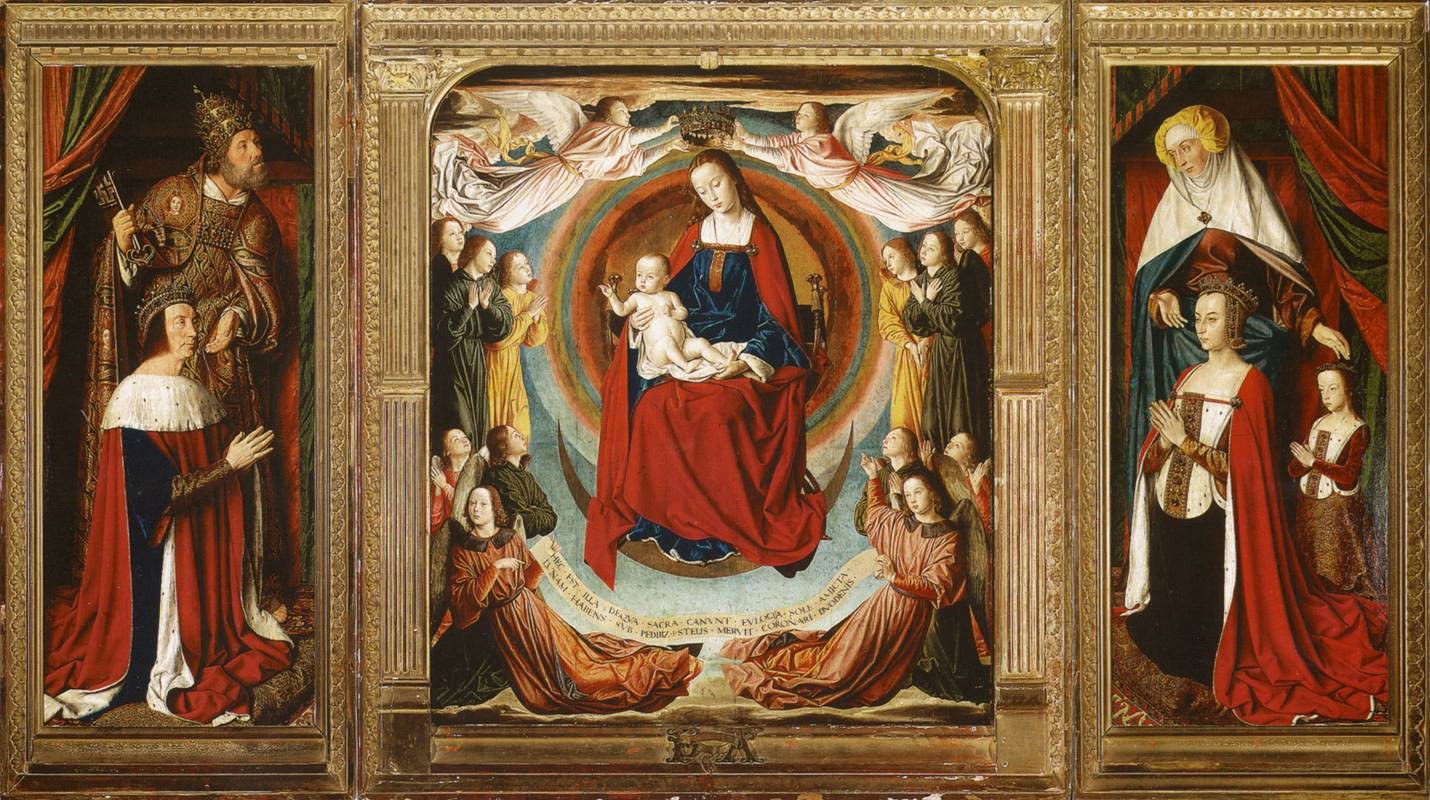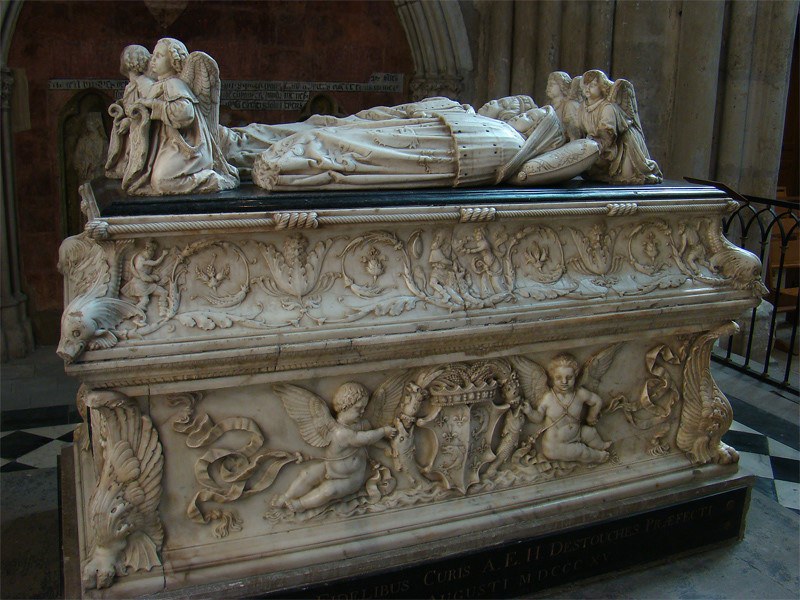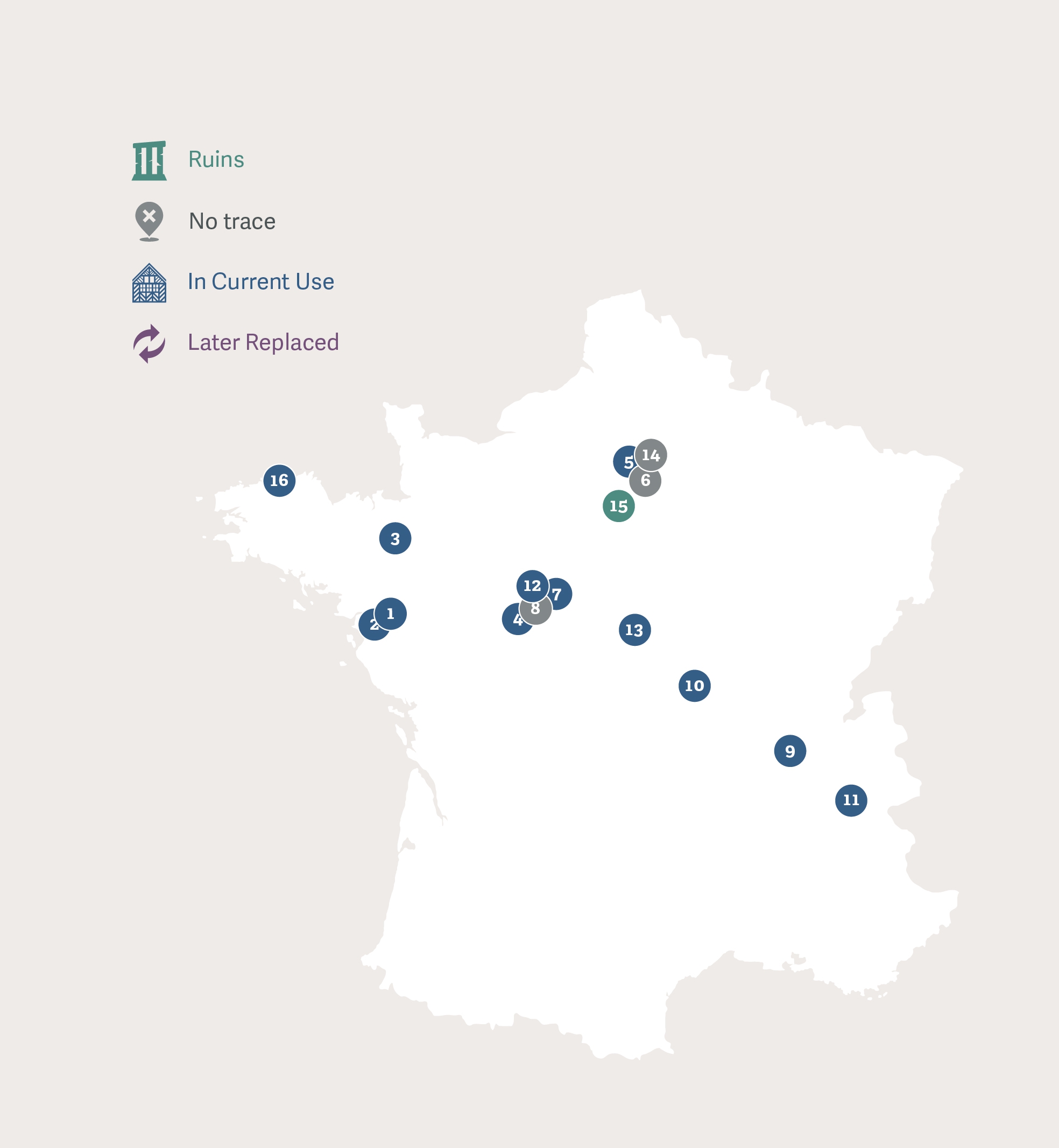Anne of Brittany: Chateaux in Brittany and France
Anne of Brittany spent most of her life in the beautiful chateaux of the Loire, occasionally visiting Paris, or the eastern parts of France. When possible, she visited her own duchy.
The numbers against the places correspond to those on the map here and at the end of this article.
Anne was born in the Chateau des Ducs, in Nantes (1) on the southern edge of Brittany. Brittany had never been part of the kingdom ruled by the French crown, but, following the Hundred Years War, as the French crown grew in strength, its aim was to bring previously peripheral territories under central control. Nantes was originally a Roman settlement, and its chateau, or castle, was built in the thirteenth century above the Roman fortifications. Anne’s father rebuilt the chateau, partially as palace, and partly as fortress, and his work was continued by Anne, who copied the French and Italian influences of the Renaissance to create a palace, similar to the French chateaux further east on the Loire.
The chateau, and the town, of Nantes saw a number of important events in Anne’s life – it was here she staged a state entry on her return to Brittany after the death of Charles VIII, and it was in Nantes that she married Louis XII. In 1598, it was in this chateau that Henri IV of France signed the Edict of Nantes, giving limited freedom of worship to Huguenots. Today, the chateau houses the city museum, and is open to the public.
Not far from the city of Nantes, is Couëron (2) (or Koeron in Breton), where Anne’s father, Duke Francis II died on 9th September 1489. Today, Couëron is part of Nantes itself, but in the 1480s it was a rural retreat, far from the threat of the plague which was raging in the city centre. The duke was buried beside Anne’s mother in the cathedral at Nantes.
Anne had been recognised by the Estates-General of Brittany as her father’s heir, and she was proclaimed and crowned in Rennes, the duchy’s capital (2). The settlement of Rennes pre-dates the Romans, but was expanded during the Roman period, and became an outpost of Roman civilisation as the Visigoths and Franks overran the Western Roman Empire. A Christian bishopric was established there in AD 453, and the original cathedral was built within the century following. Anne was hampered, not just by her youth (she was only eleven) but by the disastrous treaty her father had been obliged to sign with the French, giving the French king, Charles VIII, control of her marriage. Forced by the advance of the French army in 1490 to seek terms, Anne signed the Treaty of Rennes on 15 November, 1491, agreeing to marry Charles VIII.
Rennes today remains one of the most interesting towns in Brittany, although the northern half of the town was largely burnt in 1720. The front of the cathedral collapsed in 1490, and the visible façade was built during the period 1540 – 1708, with the remainder of the building replaced in the eighteenth century. The city remained the location of the Estates-General, and then the Parlement of Brittany from 1553 (alternating with Nantes as the location) until its abolition during the French Revolution.
Two weeks after the Treaty of Renne, Anne married Charles VIII in the great hall of the Chateau of Langeais (3), also in the Loire valley, in the area known as Tournais. The early fortress at Langeais had been built by Foulques Nerra, Count of Anjou and for many years was disputed between Foulque’s descendants, the counts of Anjou, and the neighbouring counts of Blois. The counts of Anjou became kings of England, and the chateau was attacked and captured by King Philip Augustus, in his bid to take more lands into the control of the French crown. The original fortress was destroyed on the orders of Charles VII, during the Hundred Years War, then rebuilt by Louis XI after 1465. Externally, the chateau still resembled a fortress, but the façades fronting the courtyard had numerous windows. In July 1466, Louis gave the chateau to the Jean de Dunois, the Bastard of Orléans, who had been the greatest supporter at the French court of Joan of Arc.
Over the centuries, the chateau was in various hands, and gradually fell into disrepair, until it was purchased in 1886 by Jacques Siegfried, who spent twenty years restoring it to reflect the style and interiors of the end of the Middle Ages. Siegfried gave the chateau to the Institut Français, which still owns and maintains it. It is open to the public.
Within two months of her marriage, Anne was crowned as queen of France at the Basilica of Saint Denis in Paris (4). Traditionally, French monarchs were crowned at Reims, but their queens were crowned in various locations: Eleanor of Aquitaine with Louis VII at Bordeaux; Adèle of Champagne with Louis VII at Rheims, Isabelle of Haiunault, wife pf Philip Augustus at Saint Denis; Blanche of Castile, wife of Louis VIII at Rheims with her husband: her daughter-in-law, Marguerite of Provence, wife of St Louis IX at Notre Dame and Isabeau of Bavaria at Saint Denis in 1389. From that time, most queens were crowned at Saint-Denis.
The Basilica of Saint-Denis is one of the oldest in France, centred on the shrine of the eponymous saint who was martyred in around AD 250. The chapel and monastery grew over the centuries, and was hugely extended by Abbot Suger, minister to Louis VII (and critic of Eleanor of Aquitaine). Suger’s works are one of the earliest examples of Gothic architecture – focused on light. Saint-Denis was the burial place of almost all of France’s monarchs, and was also the location of Henri IV’s conversion to Catholicism in 1589.

Whilst in Paris, Anne and Charles spent most of their time at the Hôtel des Tournelles (5), a complex of royal buildings, north of the present-day Place des Vosges. During the 1420s, when Henry VI of England was also, in theory, king of France, his regent, John of Lancaster, Duke of Bedford, lived in splendour in the hôtel – surrounded by parks, gardens and even a maze. After the final departure of the English in 1436, Charles VII gave the hôtel to the Orléans branch of royal family, but it was still available for use by Anne and Charles. Later, Anne’s second husband, Louis XII, died in the hôtel. No traces remain of the palace complex.
Outside Paris, Anne, whilst married to Charles, resided mainly at the chateau of Amboise (7). Amboise is one of the best-known chateaux of the Loire, situated about 20 miles east of Tours, it overlooks the river, and is surrounded by delightful gardens. Close to the royal chateau is the Clos Lucé, where Leonardo da Vinci lived at the invitation of François I, husband of Anne’s daughter, Claude. Amboise, like Langeais, was originally within the territories of the counts of Anjou, before Touraine was wrested from the Plantagenets by King Philip Augustus. Amboise remained in the family of the lords of Amboise, until Louis of Amboise was forced to cede the chateau to the crown in the mid-fifteenth century.
Louis XI housed his queen, Charlotte of Savoy, at Amboise, and their son, later Charles VIII, was born there, and spent most of his youth there. After becoming king, Charles extended the chateau with a new loggia and chapel as well as two cavalry towers (a third remained unbuilt). Charles’ plans were influenced by what he saw in Italy in 1494, and he used Italian architects and sculptors as well as French and Flemish ones. Innovative building techniques were used, including keeping the stone heated over winter to allow building to continue (frozen mortar will crack stone). Charles’ chateau had some 220 rooms. Anne’s short-lived eldest son spent most of his life at Amboise, and it was here that Charles died, in 1498, having hit his head on a low stone door-lintel. Anne’s first period of mourning was kept at the chateau, before she went to Paris in May 1498. Amboise today is one of the most popular visitor attractions in the Loire.
Anne returned to Brittany in 1498, but was once again obliged to marry the new French king, Louis XII. The marriage contract was signed, and the wedding took place in the Chateau-des-Ducs in Nantes (1). Louis preferred the chateau of Plessi-lez-Tours (8) to that of Amboise, which was given over to the use of Louise of Savoy and her children, Marguerite, and Louis’ heir, François of Angoulême.
Plessis-lez-Tours is yet another chateau along the Loire, somewhat to the west of Tours. Originally an eleventh century fortress, used by Charles VII, it was significantly updated and enhanced by Louis XI in the 1460s. It was here that Louis XI installed seventeen silk-workers, imported from Italy, beginning the silk-trade for which the district became famous. Louis XII convalesced at Plessis after his illness in 1505 and it was here that the Estates-General of 1506 approved the marriage of Claude to François of Angoulême, who were subsequently married in the chateau, a few months after Anne’s death. The chateau can still be visited.
Both Anne’s husbands had ambitions to control Italy – Charles wished to be recognised as king of Naples, and Louis as duke of Milan. Their usual departure point for expeditions across the alps was the city of Lyon (9), and Anne would both bid them farewell, and await their return, in the city. Lyon was one of the earliest Roman settlements in France, at the confluence of the rivers Rhône and Saône, and became the capital of the province of Gallia Lugdunensis. From the time of Charlemagne, Lyon was part of the middle kingdom, between the lands that later became France and Germany, and known variously as the kingdom of Arles or Burgundy. It was annexed by France in 1362.
Anne was given a state welcome to Lyon in 1499, and a special bronze medal was cast, with Louis on the obverse and Anne on the reverse. The legend read
+LVGDVNensis·RE·PVBLICA·GAVDEnTE·BIS·ANNA·REGNANTE·BENIGNE·SIC·FVI·CONFLATA·I499 – that is, ‘The Commune of Lyons rejoices in the second reign of the good Queen Anne, when I was made 1499’.
Whilst Anne was waiting for Charles VIII at Lyon in 1494, she made a state visit to nearby Moulins (10), the chief city in the duchy of Bourbon. Today, one of the treasures of the city is the triptych in the cathedral, which probably dates to around 1498, by the Master of Moulins. This represents Pierre II, Duke of Bourbon, and his wife, Anne of Beaujeu, whose determination to impose French control over Brittany had set the course of Anne’s life.

Grenoble (11) was another town frequented by Anne whilst awaiting the return of Charles or Louis. Grenoble was the chief town in the Dauphiné, another statelet within the old kingdom of Burgundy that became part of the Holy Roman Empire, before being sold to the French crown in the early fifteenth century, on the understanding that the inhabitants would keep their tax privileges, and that the heir to the French crown would take the title ‘Dauphin’. Naturally, by 1457, the French kings had forgotten their promises about taxation and the area was integrated into France completely by Louis XI, although local resistance continued, and may have been a factor behind the province’s embrace of Protestantism in the later sixteenth century.
As noted above, Anne spent much of her time in and around the various chateaux of the Loire, and it may have been for this reason that her short-lived son, the Dauphin Charles, was buried in Tours cathedral (12).
Tours is another ancient cathedral, dating from the very early Middle Ages. It was traditionally the starting point for the long pilgrimage to Santiago de Compostela, in Spain. The second cathedral was burnt during the wars between Henry II of England (count of Anjou, and duke of Aquitaine in right of his wife, Eleanor) and Louis VII. The current cathedral was finished during the mid-fifteenth century, supported by Charles VII, and also by Anne’s predecessor, Jean V of Brittany. Anne’s children by Charles were given a superb monument, sculpted by Michel Colombe, who also sculpted the tomb of Anne’s parents, in Nantes.

As queen of France, Anne was entitled to a jointure – the lands and money that would fund her court - as well as her income from the duchy of Brittany. In 1494, Charles substituted one of her properties at Chatillon with the chateau of Mehun-sur-Yevre (13). Mehun was another ancient settlement, transformed into a mediaeval palace by Jean, Duke of Berri, whose famous Book of Hours contains an illustration of the chateau.

When Anne was widowed in 1498, after her early period of mourning, she moved to Paris to the Hôtel d’Etampes (14). This, like the Hôtel des Tournelles, was a conglomeration of royal and noble houses, amongst them the better-known Hôtel St Pol, the king’s residence. The Hôtel d’Etampes itself had cost 6,000 golden crowns to build in 1361, and was usually the residence of the French queens. Anne was one of the last royal residents. François I did not care for it, and the buildings were sold off, and disappeared over the centuries.
Once her period of mourning was over, Anne was free, in 1498, to return to Brittany, which she did, staying en route at the Chateau d’Etampes (15). This chateau had been a royal property for centuries – originally built by Robert II in the eleventh century, around a central keep, the Tour de Guinette, which still remains. It too, is illustrated in the Très Riches Heures du Duc de Berry, as the image for August, showing the nobles enjoying a falconry expedition. The keep is around ninety feet high, designed in a quatrefoil shape.

In 1499, Anne returned to France, but she made occasional visits to her duchy, the longest being in 1505. Whilst there, she fell ill with an inflammation of the eye, and requested that the relic of the finger of Saint Jean of Morlaix be sent to her for a cure. On the saint making his anger at her presumption known, by the relic miraculously returning to its resting place at the church of Saint Jean-du-doigt, in Morlaix (16), Anne travelled herself to the shrine. Happily, the saint relented, and having pressed the finger bone to her eye, Anne was cured.
Anne died in 1514, and was buried with her numerous predecessors as queen of France in Saint-Denis (4), although her heart was taken to the place dearest to her, and interred with her parents in their tomb in Nantes (1).
The map below shows the location of the places associated with Anne of Brittany discussed in this article.

